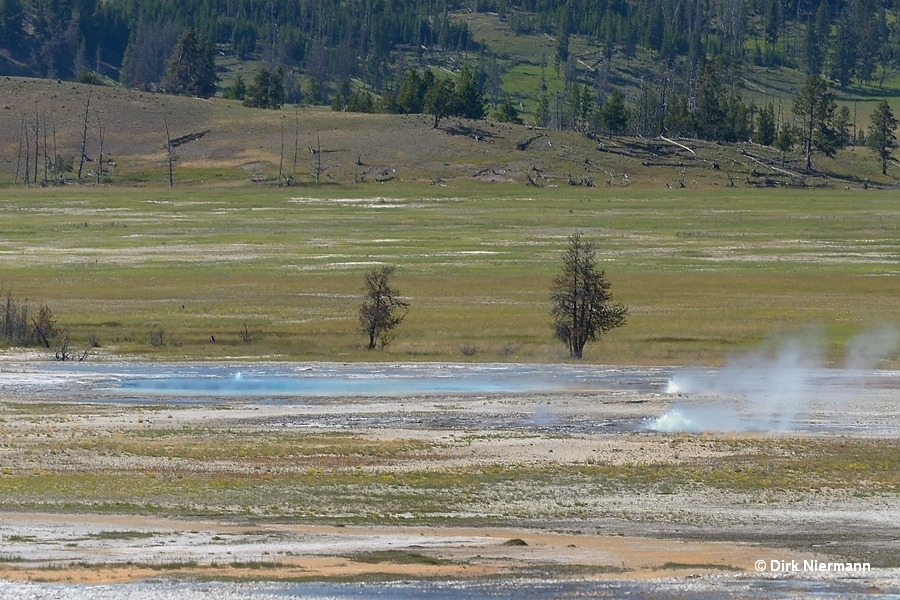Lower Geyser Basin, Kaleidoscope Group
Kaleidoscope Group is located northwest of Fountain Paint Pot far out on the flat. Since the group is closed to public entry, geyser activity can only be observed from the distance. The best viewpoint is the visitor platform at Fountain Paint Pot. From afar it is not easy to identify the different features, even with a good field guide in hands. Nevertheless, observation with the help of binoculars is entertaining and rewarding because some of the numerous perpetual spouters and geysers can always be seen playing. Several of them are capable of eruption heights of 30 m (100 feet) and more.
The westernmost geyser (the leftmost as seen from Fountain Paint Pot) of the group is called Three Vent Geyser. Two of its vents are coming with large, easily detectable craters or pools. Usually, the second crater from the left border of the group shows the strongest eruptions up to 4.5 m (15 ft) high.
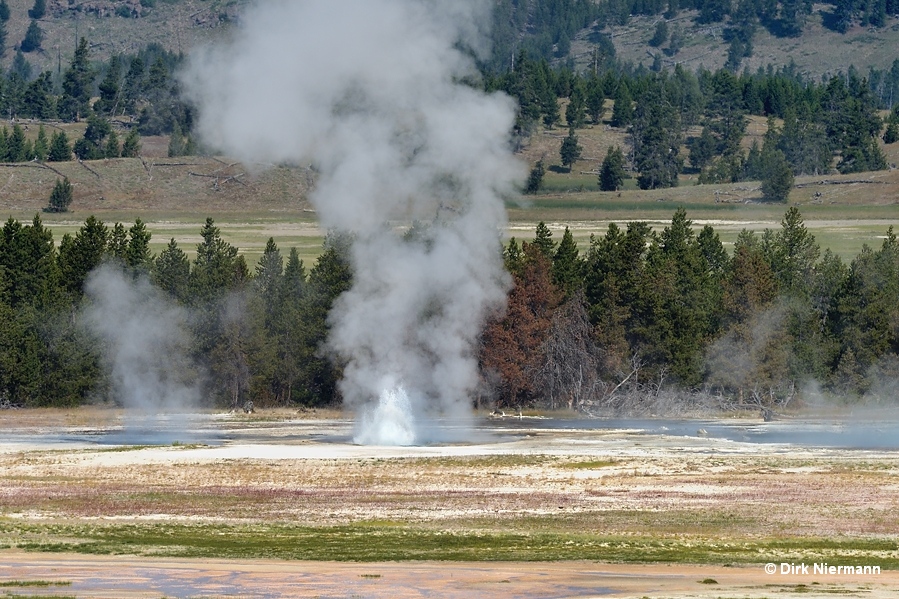
The group is named after Kaleidoscope Geyser whose crater, located almost in center of the group a little bit west of Drain Geyser, is too inconspicuous to be seen from Fountain Paint Pot if the geyser is not erupting. Kaleidoscope plays in cycles, the initial eruption of a cycle may be up to 36 m (120 ft) tall. The subsequent ones are half or less than half as high. A few feet to the right (east) and diagonally behind Kaleidoscope, Drain Geyser occupies a large, shallow blue pool or crater. Eruptions of Drain are shown in the following pictures.

While small eruptions of Drain are very frequent, larger ones, reaching up to 50 m (150 feet), are quite rare.
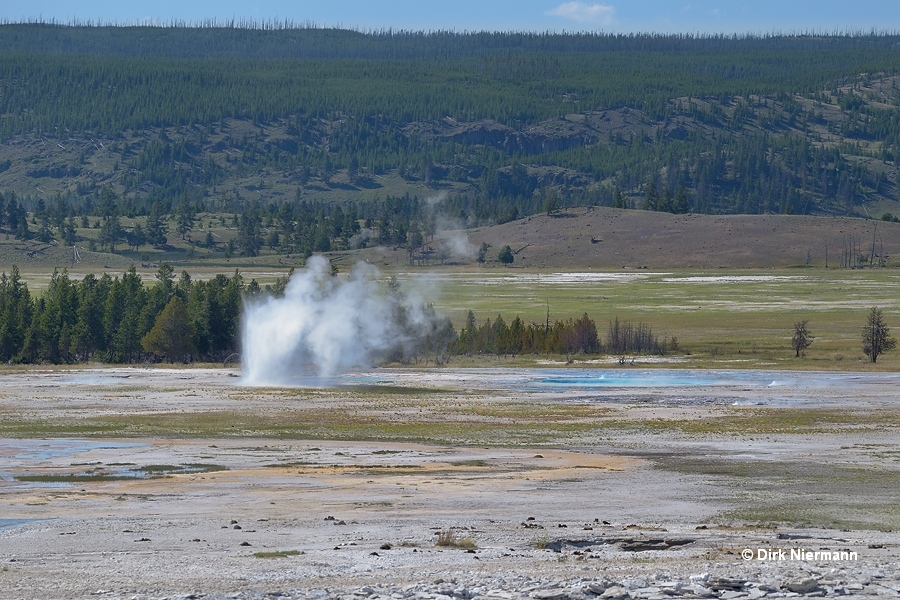
Besides Blowout Spring the crater of Drain Geyser includes at least one small geyser east of Drain in direction of Deep Blue Geyser. It is already shown in one of the photos above, while the next picture presents a little stronger eruption of this apparently unnamed feature.
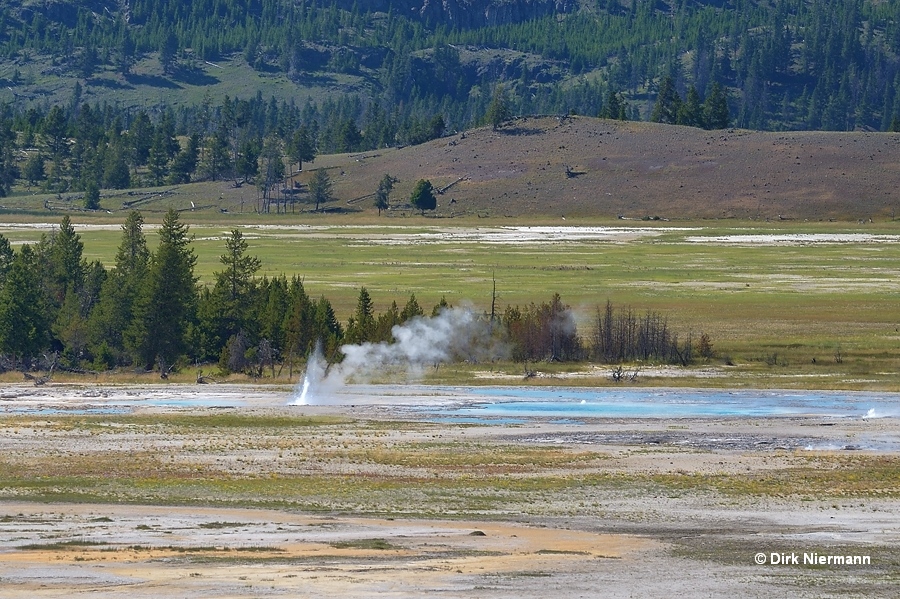
The large blue pool in the eastern section of Kaleidoscope Group (on the righthand side of the pictures) is home of several geysers, too. Most noticeable is the deep blue hole on the lefthand side in the pool, which is the crater of Deep Blue Geyser. Despite the large pool Deep Blue usually generates only medium sized eruptions up to 5 m (15 feet) height. Within Deep Blue's pool, close to the east rim, there are at least two unnamed geysers, capable of playing much higher. If you look very closely you may spot their vents at the far right in the photo above and one of them playing in the next photo.
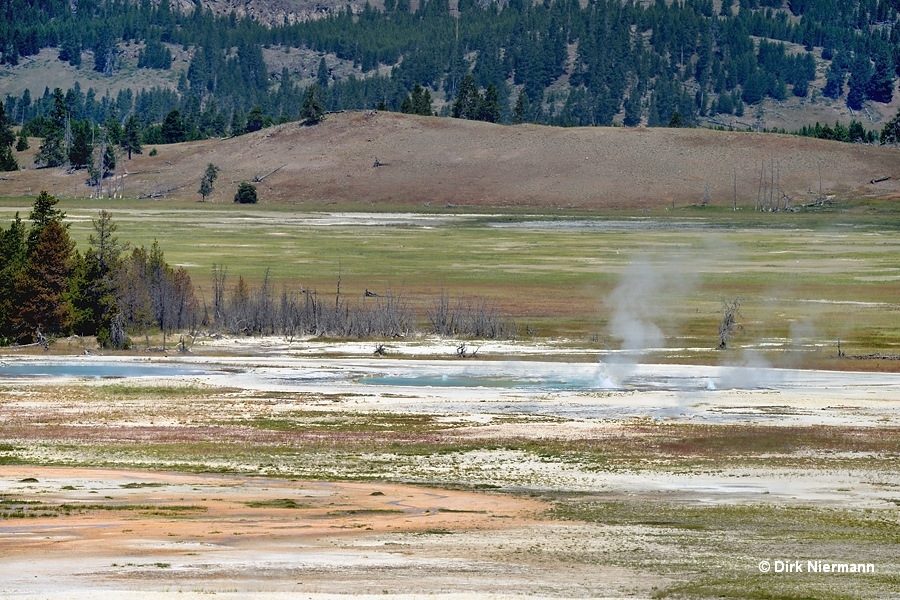
On the near side of Deep Blue Geyser two extended, adjacent craters are belonging to Honeycomb Geyser (on the lefthand side) and Honey's Vent. While eruptions of Honeycomb Geyser are quite rare, Honey's Vent is very busy, sometimes even as a perpetual spouter.
